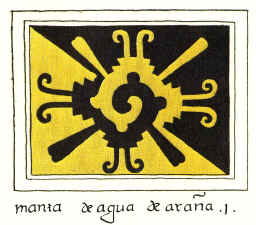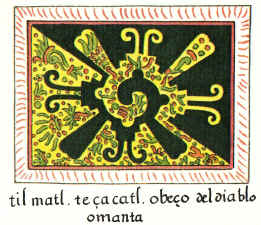[pdf id=40791]
Category Archives: Research
WQ: Pioneer Valley Coral and Natural Science Institute Lab Visit
AMHERST, MA – The week before I travelled to Greenland, I reached out to the Pioneer Valley Coral and Natural Science Institute to see if they’d be interested in working together to establish and art and science initiative based on the research I am doing visually in Water Quality/Treatment. A woman name Lily reached out to me and we connected at Amherst Coffee.
After my experience in Greenland, I recently reconnected with her to do a lab visit and to take some photos. We then briefly discussed the next step and ideas that we’ve generated since last meeting. We have some idea and plan of how we vision this to pan out and our next meeting is in two weeks!
Below are some of the photos I took of the visit, and I’m excited to notetake and keep track of the progress of this new venture! I was literally beaming on the way home from the visit as this is WHY I originally moved out to the Pioneer Valley!
Hunab Ku
The Origin of the “Hunab Ku” Symbol
“The Origin of the ‘Hunab Ku’ Symbol”
Sept. 24, 2006
http://www.diagnosis2012.co.uk/new10.htm#hunab

The “Hunab Ku” symbol, is widely presumed to be a Maya representation of a major Maya deity and the centre of our Milky Way galaxy. You can find a representation of it at the centre of the Dire Gnosis logo on the index page of this website. Anthropologist John Hoopes recently asked the Year 2012 discussion group if anyone could pinpoint any Maya sculpture, ceramic vessel, or other Precolumbian Maya source where it is shown.
The discussion brought out some interesting facts, summarised as follows:
The symbol became widely known when Jose Arguelles published The Mayan Factor in 1987, where it appears in circular form on the cover of the book, and as part of many illustrations. On p. 32, a rectangular version is labelled “Hunab Ku”, and on p.52, the rectangular version is shown and labelled as “Hunab Ku: One Giver of Movement and Measure”. On p. 30-32, Arguelles explains that in 1968, he visited a little town called Teotitlan del Valle near the Zapotec site of Monte Alban in the mountains of Oaxaca, in central Mexico, and he was shown two rugs with this pattern on them in a textile shop. He bought one in blue and orange.
The connection between the title of Hunab Ku and the design is not explained by Arguelles, but seems to have come via the modern Maya day-keeper, Hunbatz Men. Arguelles says on p.40 that he met Hunbatz Men in 1985, and admits that he was heavily influenced by him. The following year, in 1986, Hunbatz Men published a book in Spanish called Religion Ciencia Maya, (published in 1990 in English as Secrets of Maya Science/Religion), he says that the Mexicas (Aztecs) worshipped Hunab Ku, and they (as well as the Mixtecs), also worshipped the Milky Way, as represented in the “G symbol” (p.40-41). Men calls Hunab Ku “The Only Giver of Movement and Measure”, and at the bottom of p.34 he says that “in order to understand the sacred Hunab Ku…one must venerate the origin of zero, the Milky Way…”.
According to the official Mayanists, such as Sharer, Hunab Ku means “one god” in Yucatec Mayan language, and was the creator of the universe and equivalent to Itzamna, but “Hunab Ku seems to have figured little in the life of the ancient Maya and no representations of Hunab Ku have been identified in the codices or elsewhere.”
In John Major Jenkins’ 1998 book, Maya Cosmogenesis 2012, he shows the rectangular symbol, (p.329) and says it originates in the Nuttall Codex (a pre-conquest Mixtec document named after Zelia Nuttall who identified and published it), but after failing to find it in the the Nuttall codex, Hoopes contacted John Major Jenkins, who said he had seen the symbol as a frontispiece House of the Dawn – in a romance novel by Ryan, published in 1914, and also in an academic work by Zelia Nuttall, but he’d rechecked and it was not in the Nuttall Codex.
Next, I located the symbol in its rectangular form in a 1922 edition of Herbert J. Spinden’s Ancient Civilizations of Mexico and Central America (p.220), with the caption, “Mexican blanket with the design representing sand and water”.
John Major Jenkins finally settled the matter, when he found the rectangular design in the Codex Magliabecchiano, published in 1903, with a commentary by Zelia Nuttall, which is an Aztec document and dates from some time before 601. Hoopes went on to find that the codex shows variations of the rectangular design, and says they are “mantas” – mantles or ritual cloaks that were used in festivals – in particular, the festival of lip plugs. The word for lip plug was originally mistranslated as spider water, which is given in the caption.
So, in summary, the “Hunab Ku” symbol was originally a rectangular symbol used by the Aztecs as a ritual cloak design, known as the Mantle of Lip Plugs (or, arguably, mantle of spider water). The symbol survives as a rug design being sold in central Mexico, but was associated with the Milky Way and the god Hunab Ku by Jose Arguelles in 1987, who changed the symbol to a circular one. This is how the symbol appeared in the 16th century Codex Magliabecchiano:
WQ: Thoughts and Everything Else
[vc_row][vc_column width=”2/3″][vc_custom_heading text=”Inquiry: WQ: Thoughts and Everything Else” font_container=”tag:h3|text_align:left” google_fonts=”font_family:Roboto%3A100%2C100italic%2C300%2C300italic%2Cregular%2Citalic%2C500%2C500italic%2C700%2C700italic%2C900%2C900italic|font_style:100%20light%20regular%3A100%3Anormal” el_class=”widget-title”][vc_column_text]
Water Quality
I recently started a physical sketchbook to keep notes in about this research interest/project and went through my project notes and copied down anything that mentioned water quality. One tidbit that stuck out was Marasu Emoto. His life’s work was focused on determining that human consciousness had an affect on water quality through praying and other spiritual engagements. My initial thought for this project was to develop some sort of kinetic sculpture that would change depending on the rain fall and rainwater collection rates.
I still like this idea but having my medium be photographic, I am conceptualizing how this kinetic sculpture would look in photographic tones; playing with light/dark, hues and colors, existing in grayscale or not. From my previous study of photographic sculptures… the light can be formed into anything to create a form within 3-dimensional space.
One of my all time favorite artists is Anthony Howe – who uses the power of the wind to animate his steal sculptures, is a great example of using the environment to interact with his work. Lately, Daniel Rozin‘s work in mirrors also has intrigued me. He’s able to take the mathematical understanding of a mirror and create a mirror pretty much out of anything. He’s studied materials and is able to make a mirror that are made of various materials but exhibit the same behavior and interaction. In the end, my hope would be to place this sculpture in a designated location and study the effects of rainwater. I feel like I am getting closer to figuring how this water quality project can turn itself into a collection of artwork as well as a scientific development.
What Other Universities are Doing
I thought it might be worthwhile to see what other universities are doing in the Pioneer Valley in regards to water quality. While researching the topic – the Water Resources Research Center at UMassAmherst are currently focused on the following:
Acid Rain Study
Agricultural Water: Blue, Green, and Grey Water
River Water Quality Study
Among many other projects.
[/vc_column_text][/vc_column][vc_column width=”1/3″][vc_widget_sidebar sidebar_id=”sg498_8790gxe”][vc_custom_heading text=”Support the Research” font_container=”tag:h2|font_size:25px|text_align:left|color:%2311322a” google_fonts=”font_family:Playfair%20Display%3Aregular%2Citalic%2C700%2C700italic%2C900%2C900italic|font_style:400%20regular%3A400%3Anormal”][vc_custom_heading text=”New Products” font_container=”tag:h3|text_align:left” google_fonts=”font_family:Roboto%3A100%2C100italic%2C300%2C300italic%2Cregular%2Citalic%2C500%2C500italic%2C700%2C700italic%2C900%2C900italic|font_style:100%20light%20regular%3A100%3Anormal” el_class=”widget-title”][vc_masonry_grid post_type=”post” max_items=”4″ element_width=”6″ gap=”10″ item=”basicGrid_NoAnimation” grid_id=”vc_gid:1568585342571-965b3b5c-f944-7″ taxonomies=”579, 632, 631, 580, 582, 581″][vc_custom_heading text=”Other Posts” font_container=”tag:h3|text_align:left” google_fonts=”font_family:Roboto%3A100%2C100italic%2C300%2C300italic%2Cregular%2Citalic%2C500%2C500italic%2C700%2C700italic%2C900%2C900italic|font_style:100%20light%20regular%3A100%3Anormal” el_class=”widget-title”][vc_masonry_grid post_type=”post” max_items=”4″ element_width=”6″ gap=”10″ item=”basicGrid_NoAnimation” grid_id=”vc_gid:1568585342623-fbccb26f-fb99-10″ taxonomies=”132″][/vc_column][/vc_row]
Study: Photographic Sculptures
[vc_row][vc_column width=”2/3″][vc_custom_heading text=”Inquiry: Study: Photographic Sculptures” font_container=”tag:h3|text_align:left” google_fonts=”font_family:Roboto%3A100%2C100italic%2C300%2C300italic%2Cregular%2Citalic%2C500%2C500italic%2C700%2C700italic%2C900%2C900italic|font_style:100%20light%20regular%3A100%3Anormal” el_class=”widget-title”][vc_column_text]
I have been working on my water quality project, and have been thinking about how to turn the vector graphics I have made into something a bit more photographic as that is my determined medium. I’ve been doing a bit of a search on ‘photographic sculptures’ and James Nizam‘s work came up. He has used lighting as a way to form sculptures in a designated space. For example, the piece above he’s used a shipping container, reflectance paint and light elements to form a 3Dimensional image and his work looks computer generated (not in a bad way) but in the light that the craftsmanship looks really good. I think I could take the form of the body of water (shipping container), light source and other similar materials and use that as a guide. Hmm, time to do a bit more research on that!
[/vc_column_text][/vc_column][vc_column width=”1/3″][vc_widget_sidebar sidebar_id=”sg498_8790gxe”][vc_custom_heading text=”Support the Research” font_container=”tag:h2|font_size:25px|text_align:left|color:%2311322a” google_fonts=”font_family:Playfair%20Display%3Aregular%2Citalic%2C700%2C700italic%2C900%2C900italic|font_style:400%20regular%3A400%3Anormal”][vc_custom_heading text=”New Products” font_container=”tag:h3|text_align:left” google_fonts=”font_family:Roboto%3A100%2C100italic%2C300%2C300italic%2Cregular%2Citalic%2C500%2C500italic%2C700%2C700italic%2C900%2C900italic|font_style:100%20light%20regular%3A100%3Anormal” el_class=”widget-title”][vc_masonry_grid post_type=”post” max_items=”4″ element_width=”6″ gap=”10″ item=”basicGrid_NoAnimation” grid_id=”vc_gid:1568585435078-ba7241da-a093-5″ taxonomies=”579, 632, 631, 580, 582, 581″][vc_custom_heading text=”Other Posts” font_container=”tag:h3|text_align:left” google_fonts=”font_family:Roboto%3A100%2C100italic%2C300%2C300italic%2Cregular%2Citalic%2C500%2C500italic%2C700%2C700italic%2C900%2C900italic|font_style:100%20light%20regular%3A100%3Anormal” el_class=”widget-title”][vc_masonry_grid post_type=”post” max_items=”4″ element_width=”6″ gap=”10″ item=”basicGrid_NoAnimation” grid_id=”vc_gid:1568585435126-24787645-9a3f-10″ taxonomies=”132″][/vc_column][/vc_row]
Water Quality Update
[vc_row][vc_column width=”2/3″][vc_custom_heading text=”Inquiry: Water Quality Update” font_container=”tag:h3|text_align:left” google_fonts=”font_family:Roboto%3A100%2C100italic%2C300%2C300italic%2Cregular%2Citalic%2C500%2C500italic%2C700%2C700italic%2C900%2C900italic|font_style:100%20light%20regular%3A100%3Anormal” el_class=”widget-title”][vc_column_text]
Over the summer, I initiated a water quality project that would take data from water tests from bodies of water that were near me at the time. One aspect of my artwork is collecting and going out on walks and in the fields to collect items for my artwork. This project is inline with that and I have been thinking about how to turn this data into a visually pleasing way. I have investigated into using 3D printing to sculpt the topography of the body of water into a 3D form and then color that form using the colors from the water tests. But 3D printing is expensive, so until I get there, I am going to work on this project 2Dimensionally. I’m hoping to turn it more into just using the outline of the body of water to visually depict the water test data. But here’s a starting point and something completely new. 🙂
[/vc_column_text][vc_empty_space][vc_column_text]
[/vc_column_text][vc_empty_space][vc_single_image image=”16035″ img_size=”full” alignment=”center”][/vc_column][vc_column width=”1/3″][vc_widget_sidebar sidebar_id=”sg498_8790gxe”][vc_custom_heading text=”Support the Research” font_container=”tag:h2|font_size:25px|text_align:left|color:%2311322a” google_fonts=”font_family:Playfair%20Display%3Aregular%2Citalic%2C700%2C700italic%2C900%2C900italic|font_style:400%20regular%3A400%3Anormal”][vc_custom_heading text=”New Products” font_container=”tag:h3|text_align:left” google_fonts=”font_family:Roboto%3A100%2C100italic%2C300%2C300italic%2Cregular%2Citalic%2C500%2C500italic%2C700%2C700italic%2C900%2C900italic|font_style:100%20light%20regular%3A100%3Anormal” el_class=”widget-title”][vc_masonry_grid post_type=”post” max_items=”4″ element_width=”6″ gap=”10″ item=”basicGrid_NoAnimation” grid_id=”vc_gid:1568585506981-52521317-417d-4″ taxonomies=”579, 632, 631, 580, 582, 581″][vc_custom_heading text=”Other Posts” font_container=”tag:h3|text_align:left” google_fonts=”font_family:Roboto%3A100%2C100italic%2C300%2C300italic%2Cregular%2Citalic%2C500%2C500italic%2C700%2C700italic%2C900%2C900italic|font_style:100%20light%20regular%3A100%3Anormal” el_class=”widget-title”][vc_masonry_grid post_type=”post” max_items=”4″ element_width=”6″ gap=”10″ item=”basicGrid_NoAnimation” grid_id=”vc_gid:1568585507213-43224d78-a838-3″ taxonomies=”132″][/vc_column][/vc_row]




































